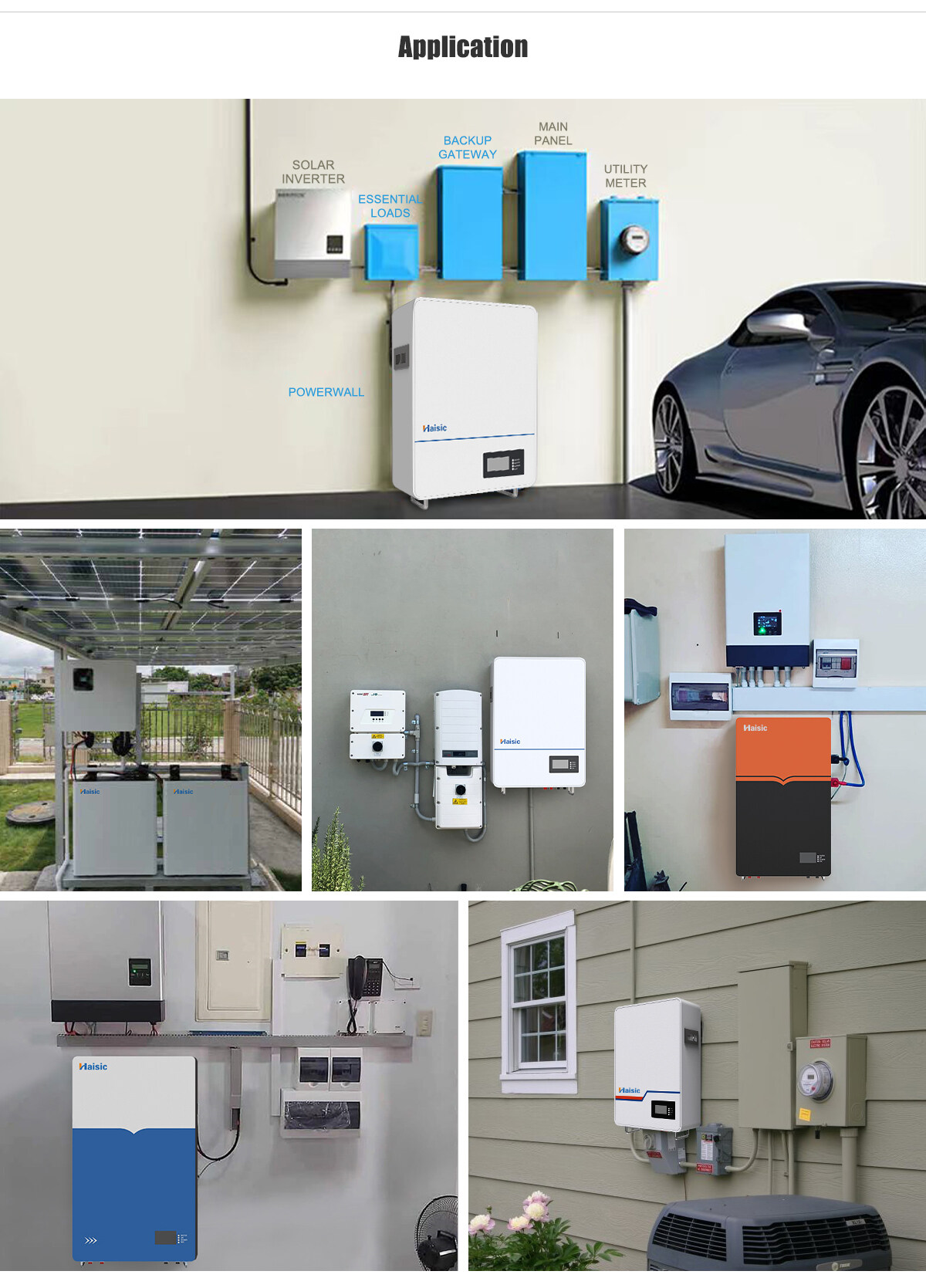Email format error
Email cannot be empty
Email already exists
6-20 characters(letters plus numbers only)
The password is inconsistent
Email format error
Email cannot be empty
Email does not exist
6-20 characters(letters plus numbers only)
The password is inconsistent

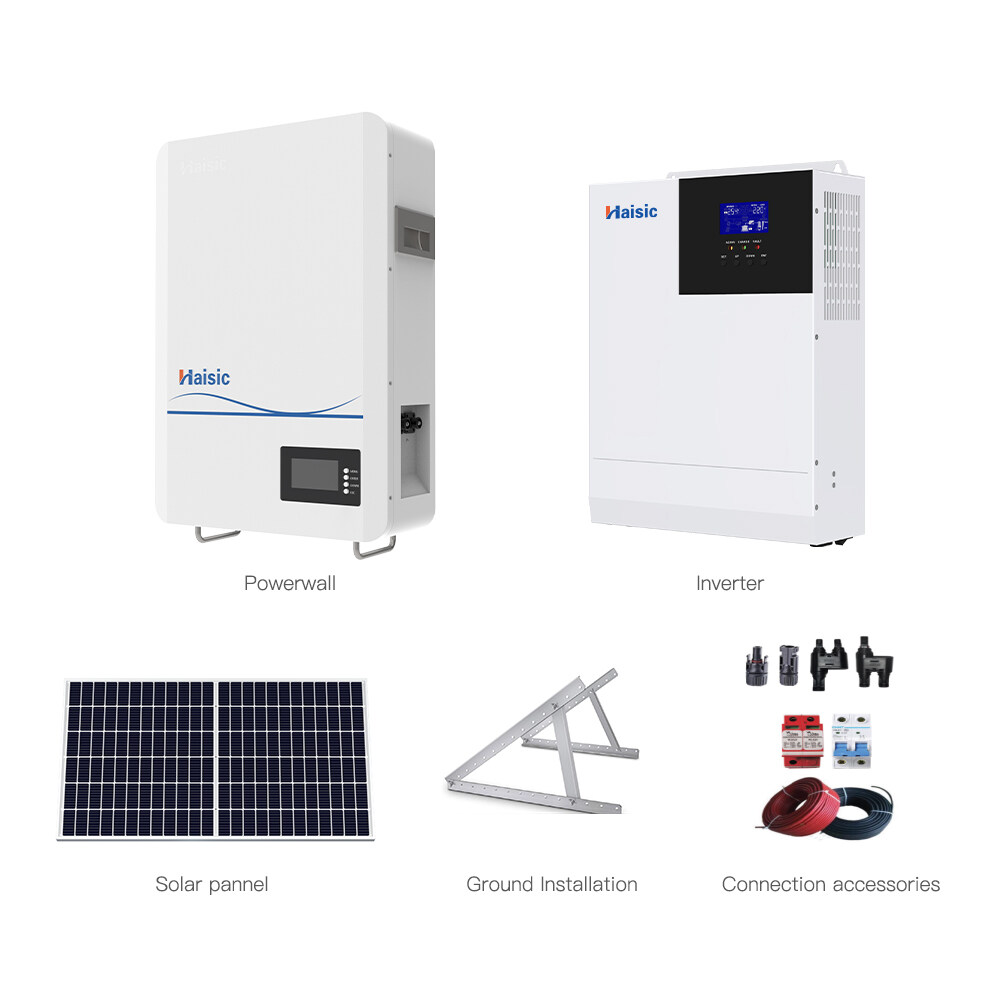
Powerwall is an integrated battery system that stores your solar energy for backup protection, ensuring that your power remains on even if the grid goes down. Your system detects power outages and automatically recharges with sunlight, allowing your appliances to run for several days.
Powerwall, a compact home battery that reduces your reliance on the grid by storing your solar energy for use when the sun isn't shining, is included with every solar purchase.
What is a Powerwall?
Powerwall is an integrated battery system that stores your solar energy for backup protection, so when the grid goes down your power stays on. Your system detects outages and automatically recharges with sunlight to keep your appliances running for days.
Every solar purchase includes Powerwall, a compact home battery that reduces your reliance on the grid by storing your solar energy for use when the sun isn’t shining.
With easy installation and a minimalist design, Powerwall complements a variety of home styles and solar systems. The compact, all-in-one construction features versatile mounting options for indoor or outdoor spaces.
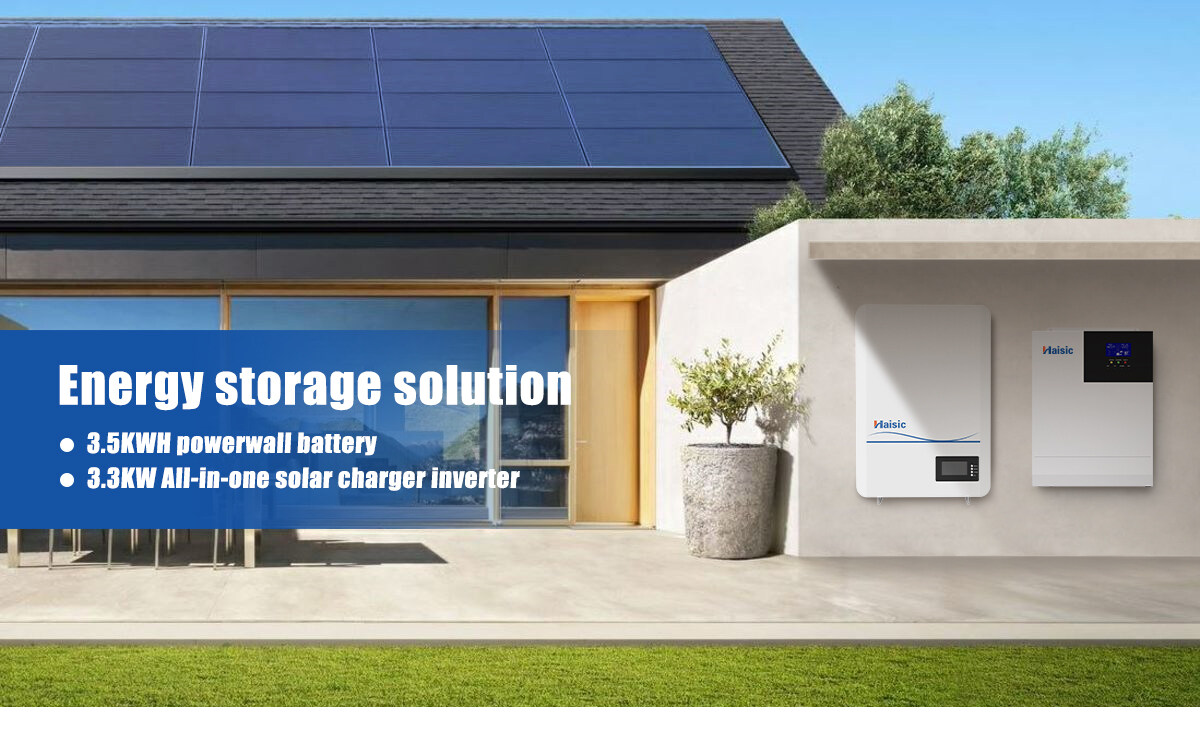
Why do we need an energy storage system?
Energy storage is one of the best solutions to reduce utility costs without high infrastructure expenses. It transforms the way that homeowners, businesses, and utilities use power.
We are confident that an energy storage system is also an astute investment that can effectively reduce the electricity cost, especially when you are facing financial pressure caused by contingency or force majeure like a pandemic or bushfire.
Get access to energy independence and ensure the electricity supply even when the grid fails due to accidents.
- Decreasing ecological footprint by storing renewable energy such as solar power.
- Live a green life safe and sound by using a LiFePO4 battery and totally cobalt free.
- By storing the surplus PV generation in a battery storage unit, you can maximize self-consumption and reduce your electricity bill.
- Reduce your electricity bill by storing electricity during the off-peak time and shifting energy to be used at peak time.
- Selling excess renewable energy to the grid or directly to other users in the microgrid.
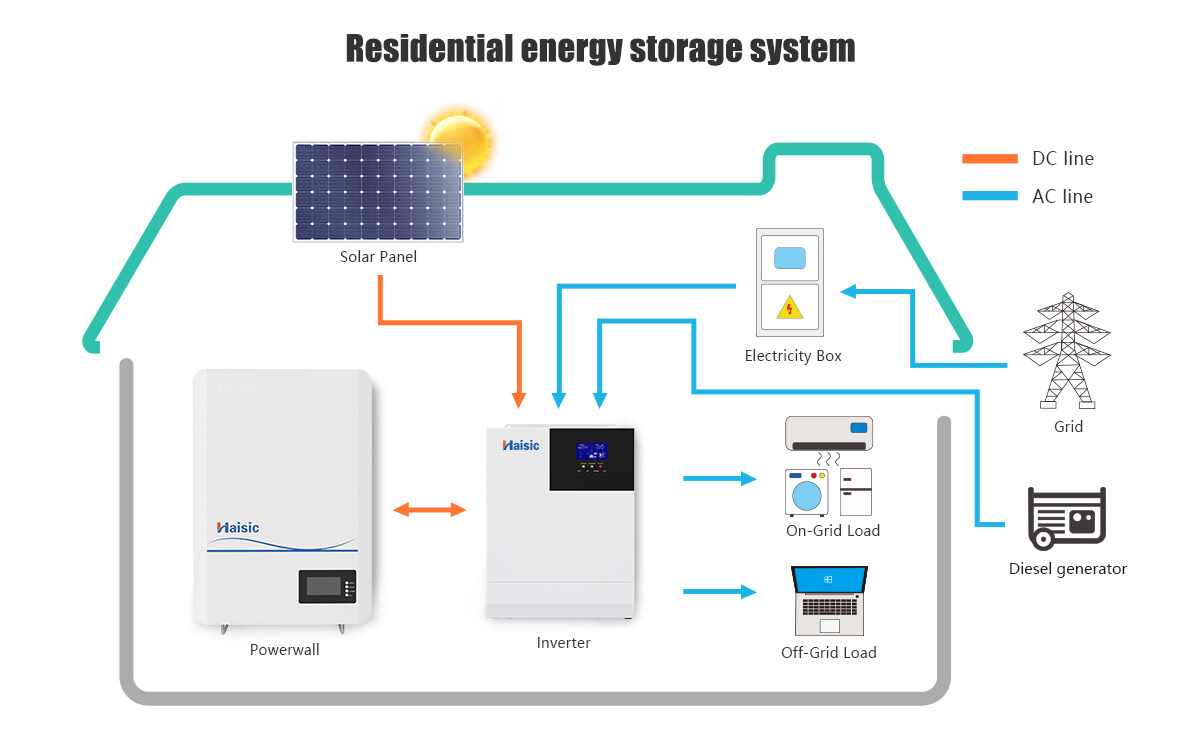
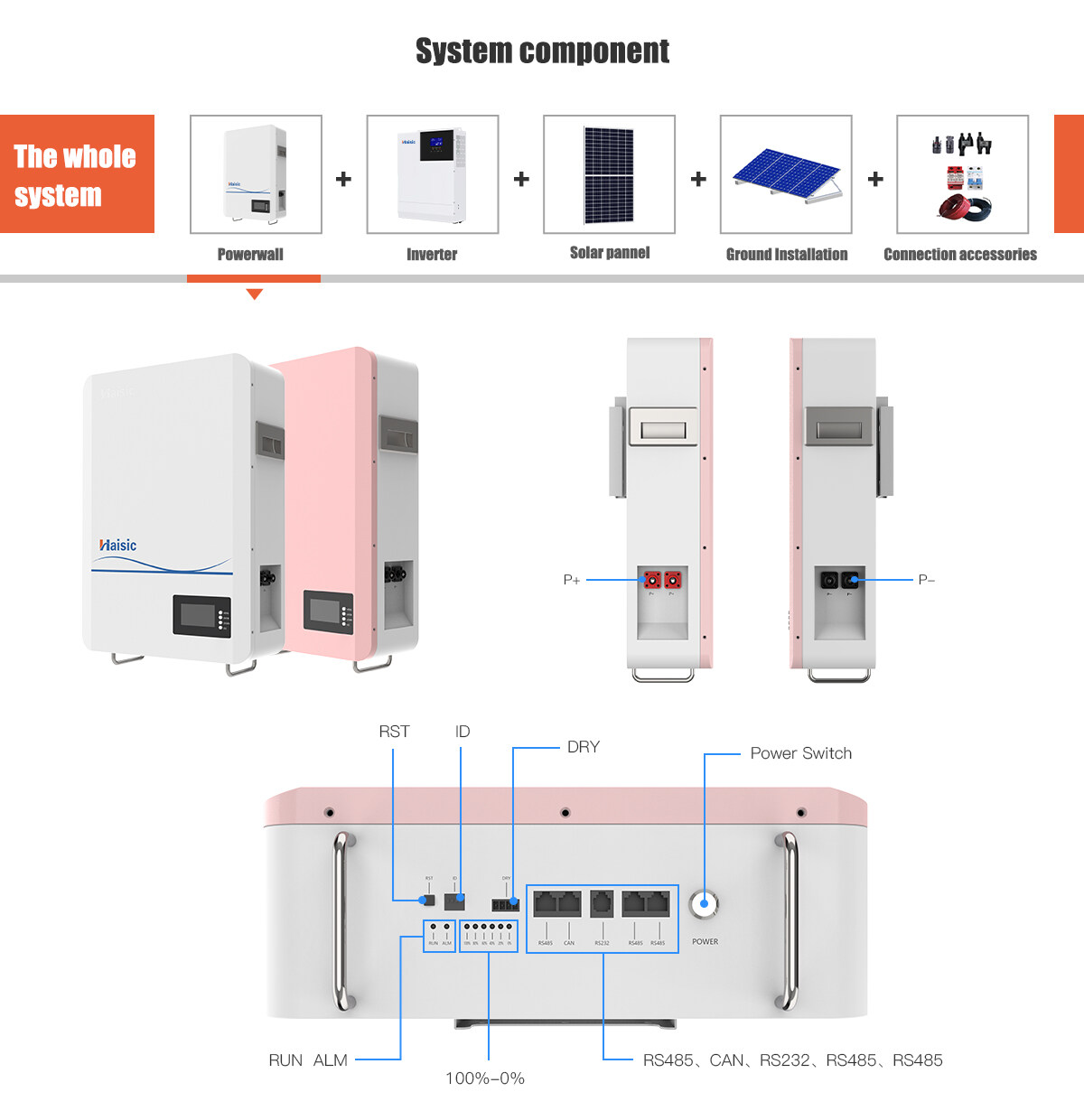
Powerwall parameters
| Model | HS-BG3000W |
| Rated Voltage(V) | 51.2 |
| Rated Capacity(Ah) | 70 |
| Rated Energy(Wh) | 3584 |
| Voltage Range(V) | 44.8-56 |
| Charge Voltage Range(V) | 55.2-56 |
| Cut-off Voltage(V) | 44.8 |
| Recommend Charge Current(A) | 30 |
| Max Charge Current(A) | 60 |
| Max Discharge Current(A) | 60 |
| Dimension:L*W*H(mm) | 374*138*530 |
| Weight(kg) | 32 |
| Communication Port | RS485、CAN |
| Display | LED+LCD |
| Terminal | Plug-in |
| Compatible inverter | Growatt, Goodwe, Sol-Ark, SRNE,DEYE |
| Humidity(%) | 5-95% RH |
| Charge Temperature Range(℃) | 0-45 |
| Discharge Temperature Range(℃) | -20-60 |
| Storage Temperature Range(℃) | -20-45 |
| Cycle Life | >6000 (0.5C@ 25℃,80% DOD) |
| Design Life (Year) | 15 |
| Safety & Certification | CE,EMC,TUV(IEC62619),UL1973 |
| Transportation | UN38.3 |
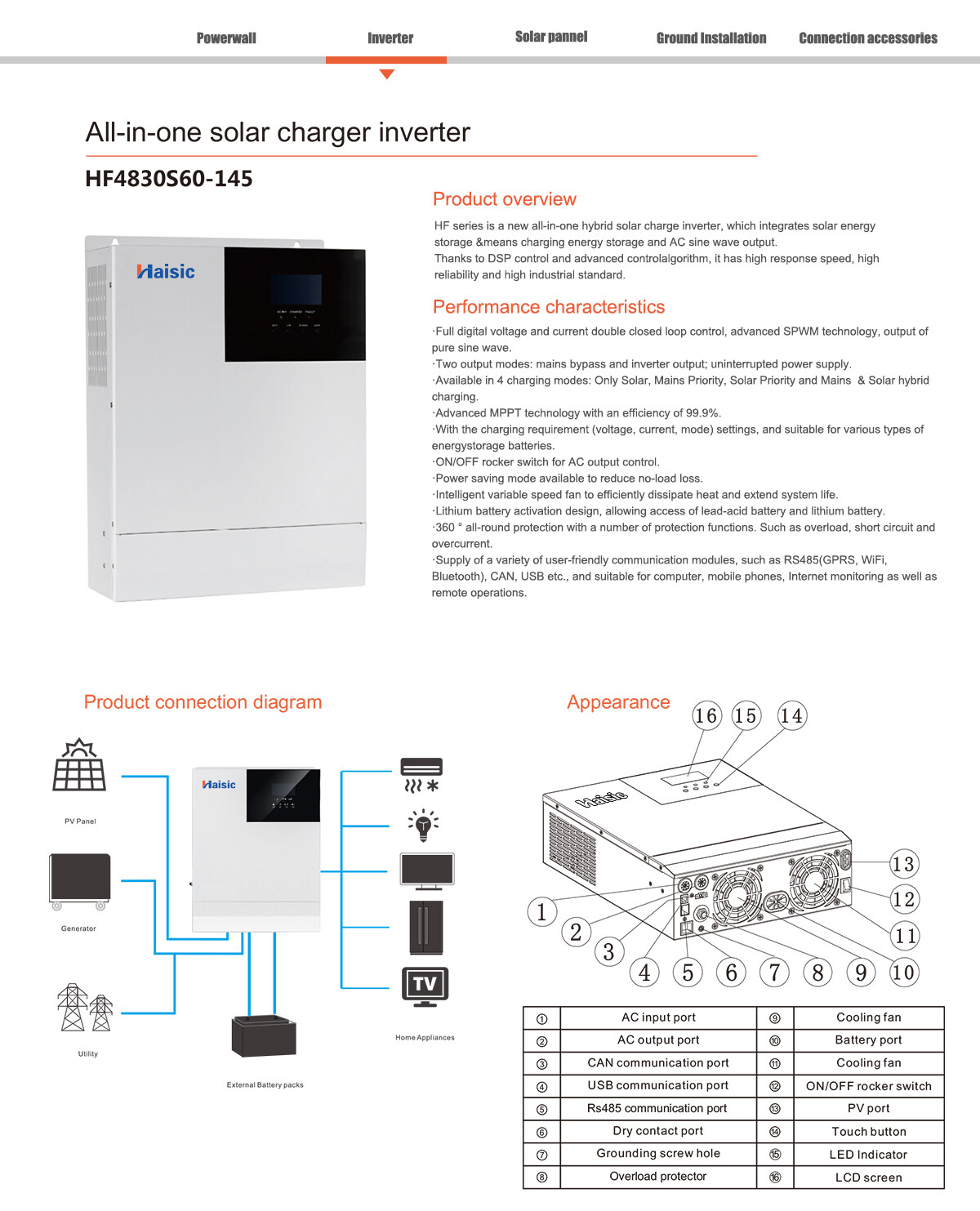
Inverter parameters
| Model | HF4830S60-145 |
| AC mode | |
| Rated input voltage | 220/230Vac |
| Input voltage range | (170Vac~280Vac) ±2%/(90Vac-280Vac)±2% |
| Frequency | 50Hz/ 60Hz (Auto detection) |
| Frequency Range | 47±0.3Hz ~ 55±0.3Hz (50Hz)/57±0.3Hz ~ 65±0.3Hz (60Hz); |
| Overload/short circuit protection | Circuit breaker |
| Efficiency | >95% |
| Conversion time (bypass and inverter) | 10ms (typical) |
| AC reverse protection | Available |
| Maximum bypass overload current | 30A |
| Inverter mode | |
| Output voltage waveform | Pure sine wave |
| Rated output power (VA) | 3300 |
| Rated output power (W) | 3300 |
| Power factor | 1 |
| Rated output voltage (Vac) | 230Vac |
| Output voltage error | ±5% |
| Output frequency range (Hz) | 50Hz ± 0.3Hz/60Hz ± 0.3Hz |
| Maximum Efficiency | >92% |
| Overload protection | (110% < load <125%) ±10%: report error and turn off the output after 5 minutes;(125% < load <150%) ± 10%: report error and turn off the output after 10 seconds;Load >150% ±10%: report error and turn off the output after 5 seconds; |
| Peak power | 6000VA |
| Loaded motor capability | 2HP |
| Output short circuit protection | Circuit breaker |
| Bypass breaker specifications | 30A |
| Rated battery input voltage | 48V (Minimum starting voltage 44V) |
| Battery voltage range | Undervoltage alarm/shutdown voltage/overvoltage alarm /overvoltage recovery... settable on LCD screen) |
| Power saving mode | Load ≤50W |
| AC charging | |
| Battery type | Lead acid or lithium battery |
| Maximum charge current | 60A |
| Charge voltage range | 40 –58Vdc |
| Short circuit protection | Circuit breaker and blown fuse |
| Circuit breaker specifications | 30A |
| Overcharge protection | Alarm and turn off charging after 1 minute |
| PV charging | |
| Maximum PV open circuit voltage | 145Vdc |
| PV operating voltage range | 60-145Vdc |
| MPPT voltage range | 60-115Vdc |
| Battery voltage range | 40-60Vdc |
| Maximum input power | 3400W |
| PV charging current range (can be set) | 0-60A |
| Charging short circuit protection | Blown fuse |
| Wiring protection | Reverse polarity protection |
| Certified specifications | |
| Certification | CE(IEC 62109-1) |
| EMC certification level | EN61000, C2 |
| Operating temperature range | -15°C to 55°C |
| Storage temperature range | -25°C ~ 60°C |
| Humidity range | 5% to 95% (Conformal coating protection) |
| Noise | ≤60dB |
| Heat dissipation | Forced air cooling, variable speed of fan |
| Communication interface | CAN/USB/RS485(WiFi/GPRS)/Dry node control |
| Size (L*W*D) | 378mm*280mm*103mm |
| Weight (kg) | 6.2 |

What to Look for in Home Battery Storage Systems?
Stackability
A single battery may not be able to power your whole home, so you’ll need to prioritize what’s essential, such as lights, outlets, air conditioning, the sump pump, and so on. But if you want to run everything in your house, some systems allow you to stack or piggyback more than one unit to achieve the level of backup you need.
AC vs. DC Coupled Systems
Batteries and solar panels store energy as direct current or DC. Connecting DC-coupled systems to solar results in less power loss. The grid and your home run on alternating current, or AC power. AC systems are slightly less efficient but more flexible and easier to install, especially if you already have solar.
Load Start Capability
Some appliances, such as central air conditioning or sump pumps, require more power to start up than once they are running. Make sure the system can accommodate your home’s specific appliance needs.
